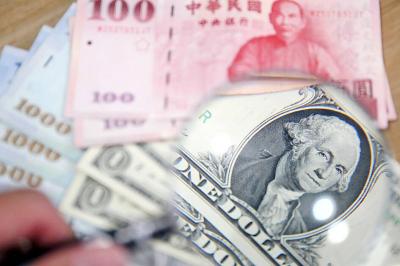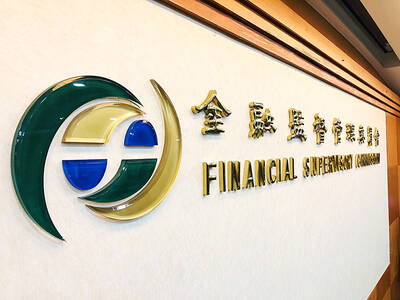The IMF’s plan to issue bonds for the first time has attracted several large emerging countries looking to diversify investments to the detriment of the dollar, whose luster is dimming under the mushrooming US budget deficit.
After the G20 major developed and emerging market countries pledged in April to boost the IMF’s resources by US$500 billion, each country must determine just how to deliver.
To help gather such a colossal sum, the 185-nation IMF has decided to take the unprecedented step of issuing bonds.
“IMF staff will present the necessary documentation to the fund’s executive board to allow the issuance of notes as early as possible,” Dominique Strauss-Kahn, the managing director of the IMF, said on Wednesday.
Three countries lined up for the notes in the space of two weeks: Russia, China, then Brazil.
Both Russia and Brazil are in the market for US$10 billion in bonds, while China is aiming for US$50 billion.
Other G20 members could follow, such as India or Saudi Arabia.
The new bonds will be offered in the IMF accounting unit, Special Drawing Right (SDR), whose value is based on a basket of currencies, rebalanced daily, in which the dollar represents only a 41 percent share.
It is the dollar’s relative weakness in SDRs that has raised market concerns that some countries are seeking to distance themselves from the greenback, the world’s reserve currency.
Those concerns materialized in a spike in bond interest rates when, on Wednesday, the Russian central bank clearly said it wanted to sell US Treasury bonds to buy IMF bonds.
In an extreme scenario, “if countries use this issuance as a way to diversify reserve holdings out of dollars, these sales will prompt liquidation of Treasuries or other dollar-denominated securities held by central banks,” Carl Weinberg of High Frequency Economics said.
But for Weinberg, the market “is overestimating the importance of this,” given the small volume that IMF bonds would represent in the face of dozens of billions of dollars the US borrows each day.
Ted Truman, an expert on the IMF who advised the US Treasury Department before the G20 summit in London on April 2, also downplayed the impact of the IMF bonds.
“These will not be bonds that will be traded in the market. They are the type of instrument that countries will receive in connection with their short-term lending to the IMF ... I see no symbol in connection with reserve diversification,” he said.
Rather, the economist said demand for the multilateral institution’s bonds was an “indication of the relative external strength of these countries at a time of global economic crisis when in previous global crises their economies would have been severely affected.”
Eleven years ago Russia, for example, defaulted on sovereign loan obligations amid a financial crisis.
For some, the announcements by Russia, China and Brazil are troubling rumbles for the US.
“It is a clear sign that these countries are not comfortable with their large dollar holdings and should be read by the US as an additional signal of market unease about their large budget deficit,” said Desmond Lachman of the American Enterprise Institute, a Washington think tank.
The US, meanwhile, has not yet contributed the US$108 billion it pledged to the IMF. The funding is tied to legislation in Congress that is still being debated.

The US dollar was trading at NT$29.7 at 10am today on the Taipei Foreign Exchange, as the New Taiwan dollar gained NT$1.364 from the previous close last week. The NT dollar continued to rise today, after surging 3.07 percent on Friday. After opening at NT$30.91, the NT dollar gained more than NT$1 in just 15 minutes, briefly passing the NT$30 mark. Before the US Department of the Treasury's semi-annual currency report came out, expectations that the NT dollar would keep rising were already building. The NT dollar on Friday closed at NT$31.064, up by NT$0.953 — a 3.07 percent single-day gain. Today,

‘SHORT TERM’: The local currency would likely remain strong in the near term, driven by anticipated US trade pressure, capital inflows and expectations of a US Fed rate cut The US dollar is expected to fall below NT$30 in the near term, as traders anticipate increased pressure from Washington for Taiwan to allow the New Taiwan dollar to appreciate, Cathay United Bank (國泰世華銀行) chief economist Lin Chi-chao (林啟超) said. Following a sharp drop in the greenback against the NT dollar on Friday, Lin told the Central News Agency that the local currency is likely to remain strong in the short term, driven in part by market psychology surrounding anticipated US policy pressure. On Friday, the US dollar fell NT$0.953, or 3.07 percent, closing at NT$31.064 — its lowest level since Jan.

The New Taiwan dollar and Taiwanese stocks surged on signs that trade tensions between the world’s top two economies might start easing and as US tech earnings boosted the outlook of the nation’s semiconductor exports. The NT dollar strengthened as much as 3.8 percent versus the US dollar to 30.815, the biggest intraday gain since January 2011, closing at NT$31.064. The benchmark TAIEX jumped 2.73 percent to outperform the region’s equity gauges. Outlook for global trade improved after China said it is assessing possible trade talks with the US, providing a boost for the nation’s currency and shares. As the NT dollar

The Financial Supervisory Commission (FSC) yesterday met with some of the nation’s largest insurance companies as a skyrocketing New Taiwan dollar piles pressure on their hundreds of billions of dollars in US bond investments. The commission has asked some life insurance firms, among the biggest Asian holders of US debt, to discuss how the rapidly strengthening NT dollar has impacted their operations, people familiar with the matter said. The meeting took place as the NT dollar jumped as much as 5 percent yesterday, its biggest intraday gain in more than three decades. The local currency surged as exporters rushed to